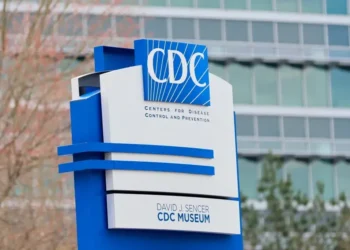New Guidelines Reveal Key Strategies to Prevent Stroke, the Nation’s Fourth Leading Cause of Death
Stroke remains a major health crisis in the U.S., ranking as the fourth leading cause of death in 2023, with more than half a million Americans affected each year. Yet, recent guidelines highlight that up to 80% of strokes could be prevented with healthier lifestyles and better risk management. The American Stroke Association, in its first update on stroke prevention in a decade, shares critical insights into reducing stroke risk through diet, exercise, and early identification of risk factors.
The most effective strategies for reducing stroke risk mirror those for improving overall health: a balanced diet, regular physical activity, and no smoking. While these habits are proven to lower stroke risk, the modern world—full of distractions like smartphones and fast food—can make these lifestyle changes challenging. Dr. Sean Duke, a stroke doctor at the University of Mississippi Medical Center, acknowledges these societal hurdles. “Our world is stacked against us,” he says, emphasizing the need for sustained efforts in making healthier choices.
A stroke occurs when blood flow to part of the brain is blocked or when a blood vessel bursts. This interruption in blood supply depletes the brain’s oxygen, potentially leading to brain damage, difficulty thinking, speaking, walking, and in severe cases, death.
A nutritious diet can lower stroke risk by controlling key factors like high cholesterol, high blood sugar, and obesity. The American Heart Association recommends a Mediterranean-style diet, which includes:
- Fruits, vegetables, whole grains, and olive oil
- Lean protein from beans, nuts, poultry, fish, and seafood
- A reduction in red meat and saturated fats
- Avoidance of processed foods and sugary drinks
Eating this way helps control weight, which in turn supports overall heart and brain health. Plus, eating healthy keeps cholesterol levels in check, significantly lowering stroke risk.
Physical activity, even simple daily movement like walking for just 10 minutes, can reduce stroke risk drastically. Dr. Cheryl Bushnell, a neurologist at Wake Forest University, stresses that exercise helps lower blood pressure, one of the primary stroke risk factors.
The American Heart Association suggests a goal of at least 150 minutes of moderate aerobic activity per week or 75 minutes of vigorous activity. Whether you prefer walking, running, cycling, or even home workouts, getting active regularly can go a long way in preventing stroke.
Obesity is another significant stroke risk, but new medications have been approved to assist in weight management. Drugs like Ozempic, Wegovy, Mounjaro, and Zepbound are now being prescribed to individuals with obesity or diabetes, offering new tools in the fight against stroke. However, experts caution that medication alone isn’t enough. A balanced diet and regular exercise remain critical components for long-term health.
The new guidelines also emphasize the importance of screening for risk factors beyond just medical conditions. Doctors are encouraged to consider non-medical factors, such as economic stability, access to healthcare, and even discrimination, which can influence a person’s likelihood of having a stroke. For example, Black Americans face nearly double the risk of stroke compared to white Americans, underscoring the importance of addressing health disparities.
Additionally, doctors are now advised to screen women for conditions that could increase their risk of stroke, such as high blood pressure during pregnancy or early menopause.
Recognizing the symptoms of a stroke quickly can save lives. The acronym FAST can help you remember the signs:
- F: Face weakness
- A: Arm weakness
- S: Speech difficulty
- T: Time—call 911 immediately!
If you or someone you know shows any of these signs, getting medical help fast is essential to minimizing brain damage.
While stroke may seem like a daunting health issue, there’s good news: it’s preventable with the right lifestyle choices and early intervention. By following the new guidelines, individuals can make healthier choices to reduce their stroke risk, and healthcare providers can better identify at-risk populations to prevent strokes before they happen. It’s time to take action for a healthier future.
This article was rewritten by JournosNews.com based on verified reporting from trusted sources. The content has been independently reviewed, fact-checked, and edited for accuracy, neutrality, tone, and global readability in accordance with Google News and AdSense standards.
All opinions, quotes, or statements from contributors, experts, or sourced organizations do not necessarily reflect the views of JournosNews.com. JournosNews.com maintains full editorial independence from any external funders, sponsors, or organizations.
Stay informed with JournosNews.com — your trusted source for verified global reporting and in-depth analysis. Follow us on Google News, BlueSky, and X for real-time updates.













